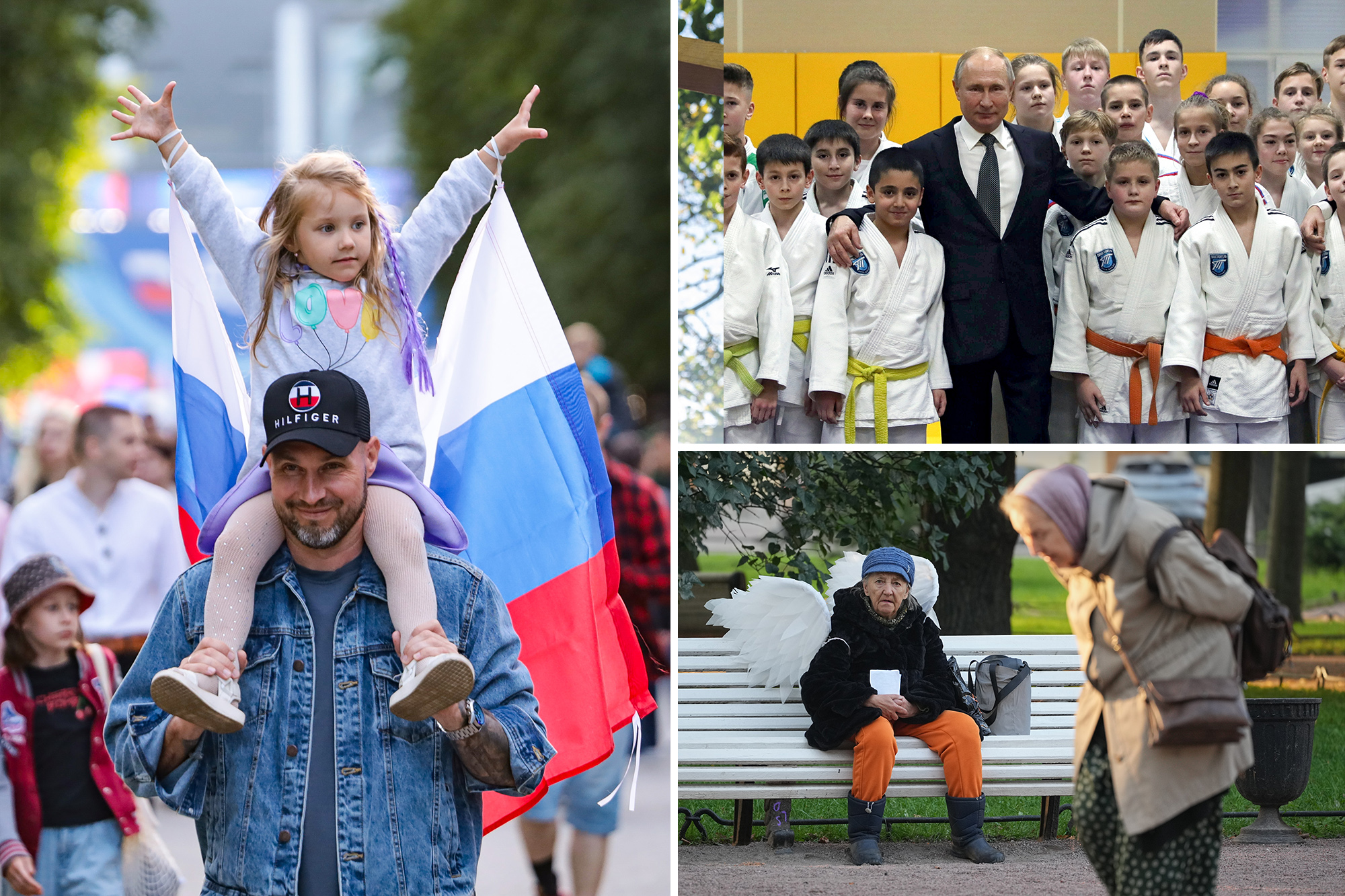Russia is grappling with a significant demographic crisis that poses serious security challenges. The country’s population has been declining for years, a trend that President Vladimir Putin has acknowledged for over two decades. In 1999, just before he took office, the number of births reached its lowest level in recorded history. Despite various initiatives aimed at encouraging higher birth rates, the situation remains dire, with births now trailing behind deaths.
At a recent demographic conference in the Kremlin, Putin emphasized the need to address this issue, stating that increasing births is “crucial” for the nation. His administration has introduced several measures designed to promote larger families, including free school meals for children in big families and the awarding of medals to mothers who have ten or more children. Putin remarked, “Many of our grandmothers and great-grandmothers had seven, eight, and even more children. Let’s preserve and revive these wonderful traditions.”
A notable increase in births occurred from 1999 to 2015, with the number of live births rising from 1.21 million to 1.94 million. However, this upward trend has since reversed, exacerbated by economic instability, the ongoing war in Ukraine, and a significant outflow of young men from Russia. The country’s population has decreased from 147.6 million in 1990 to 146.1 million in 2024, according to data from Russia’s Federal Statistics Service.
Demographic Challenges and Historical Context
The demographic difficulties in Russia are rooted in a complex history. Around 27 million Soviet citizens perished during World War II, which severely impacted the male population. Following the collapse of the Soviet Union, births plummeted again. Currently, 30% of the population is over the age of 55, up from 21.1% in 1990. This aging population further complicates efforts to boost birth rates.
The fertility rate has fallen sharply, with only 1.22 million live births recorded last year, just above the record low from 1999. Demographer Alexei Raksha noted that the number of births in February 2025 was the lowest monthly figure in over two centuries. Efforts to reverse this trend include promoting what the government refers to as “traditional family values.” This has involved new laws aimed at curbing abortion and any promotion of “child-free” ideologies.
Many measures appear to be more symbolic than effective. For instance, the government has introduced state holidays to celebrate family values but has not enacted substantial policies that would result in a significant increase in the birth rate.
Economic Pressures and Policy Responses
Economic uncertainty plays a vital role in family planning decisions among young couples. Many face challenges such as high housing costs and job security, leading to hesitancy in starting families. Jenny Mathers from the University of Aberystwyth highlighted that the pool of potential parents is shrinking, complicating efforts to raise birth rates. The war in Ukraine has also led to a mass emigration of young Russians, further depleting the available population for future generations.
Some government initiatives, such as financial incentives for parents, have garnered mixed reactions. Cash certificates for parents can be used for pensions, education, or subsidized housing. However, other proposals, like one-time payments for pregnant teenagers, have drawn criticism for potentially incentivizing early pregnancies rather than providing comprehensive support.
Despite a decrease in abortions due to increasingly restrictive laws, there has not been a corresponding rise in births. Many women report feeling pressured by state policies that discourage abortion while lacking the necessary support for raising children. A 29-year-old woman who chose not to have children shared her experience of seeking private medical care to avoid intrusive questioning about her reproductive choices.
While maintaining that abortion remains legal, the Russian government has implemented measures that effectively reduce access. These include restrictions on abortion-inducing medications and increased waiting periods at state clinics, which can lead to complications for women seeking timely procedures.
The Kremlin could potentially bolster the population by increasing immigration, but rising anti-migrant sentiment complicates this option. Many Central Asians, who have historically sought work in Russia, are now looking elsewhere due to discrimination and economic instability. As the war in Ukraine continues, the government’s promises of financial support for families are overshadowed by the overarching uncertainty of the future.
The challenges facing Russia’s demographic landscape are multifaceted, intertwining historical legacies, economic realities, and national security concerns. As the government strives to promote larger families, the effectiveness of these initiatives remains uncertain, leaving many to wonder how Russia will navigate its demographic future.
